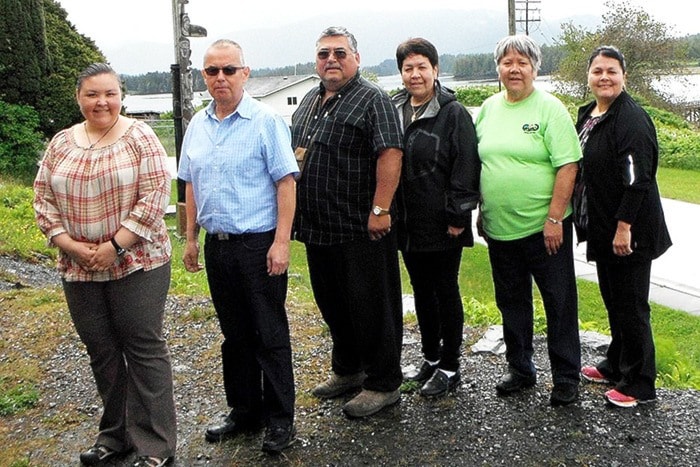First contact made by Europeans to northwest B.C. more than 500 years ago didn’t just lead to the spread of a wealth of diseases between First Nations and Europeans, it fundamentally affected the DNA structure of Coast Tsimshian modern descendants living today.
That’s the revelatory discovery made by 10 researchers including co-leaders of the study University of Illinois anthropology professor Ripan Malhi, the University of Chicago’s John Lindo and Pennsylvania State University’s biology professor Michael DeGiorgio.
Metlakatla co-authors were also involved in the study, published on Nov. 15 in the scientific journal, Nature Communications, including Metlakatla’s Barb Petzelt and Joycelynn Mitchell. Lax Kw’alaams history and research results were also represented.
Petzelt, treaty coordinator for the Metlakatla Treaty Office, said the Band has had a relationship with Malhi and his group for seven or eight years now.
After an original multi-phase report was produced this off-shooting study had its early findings completed that involved excavating remains of 25 First Nations people buried in the Prince Rupert harbour and on Lucy Island from Coast Tsimshian territory 40-50 years ago for display in a museum, 25 volunteers consisting of modern descendants submitted their DNA gene structure (genome) to be tested versus the ancestors’ remains DNA to contrast the genome from pre- and post-European contact. Researchers wanted to see if a pre-existing genetic component led to the massive depopulation (57 per cent) of First Nations in the area from disease and infection. The data from the human remains span periods between 6,000 – 9,000 years ago.
The result, detailed in the November study, indicates that the Lax Kw’alaams and Metlakatla oral histories of mass depopulation was confirmed, which showed a prevalent shift in immune response from the ancient ancestors and the modern descendants.
“[This] stage of the research we were looking at the full genome – the nuclear DNA which is the combination from both parents. When they were looking at the full genome, they did a scan to see to see if there were any differences and similarities in the full genomes of the ancient ancestors and the modern descendants,” said Petzelt last week.
“That’s when they noticed this one particular gene that deals with immune responses was different in the ancient ancestors compared to the modern descendants.”
Petzelt explained that it was inferred this was likely due to natural selection and the changing environment of European colonization.
The lack of immunity to the new disease threats killed many native to the area.
The 57 per cent reduction in population of the Coast Tsimshian in the area almost 200 years ago is widely shared through the Lax Kw’alaams and Metlakatla’s oral history.
“It looks like the ancient ancestors were adapted to the pathogens from this region that were endemic here and when the Europeans arrived and the various pathogens that they carried inadvertently from their home areas in Europe – the people that were here who had not before been exposed to those pathogens had a lower immunity to those particular ones compared to the local pathogen. The diseases that were brought over ended up wiping out the local environment and those who had the other variant,” said Petzelt.
Smallpox was the dominant epidemic in this area, but this perspective brings a whole new light on effects that are still present today through the genome.
“Everybody knows about the stories of the smallpox epidemics and how devastating they were. The interesting part about this research is that they found it actually shows up in our genetics. The historical accounts of what the diseases had done to all the native population is pretty clear and pretty heartbreaking. To see that it actually shows up in the DNA is pretty interesting,” she added.
“The people who ended up surviving those epidemics – their genetics are passed on. So a slight variation in their gene may have saved a bunch of people.”
In speaking with UK-based The Independent, Metlakatla’s Mitchell told the outlet that having modern research back the Nation’s oral history is a terrific achievement.
“Our oral history tells the death of a large percentage of our population by diseases from the European settlers ... We are pleased to have scientific evidence that corroborates our oral history. As technology continues to advance, we expect that science will continue to agree with the stories of our ancestors,” Mitchell said.
